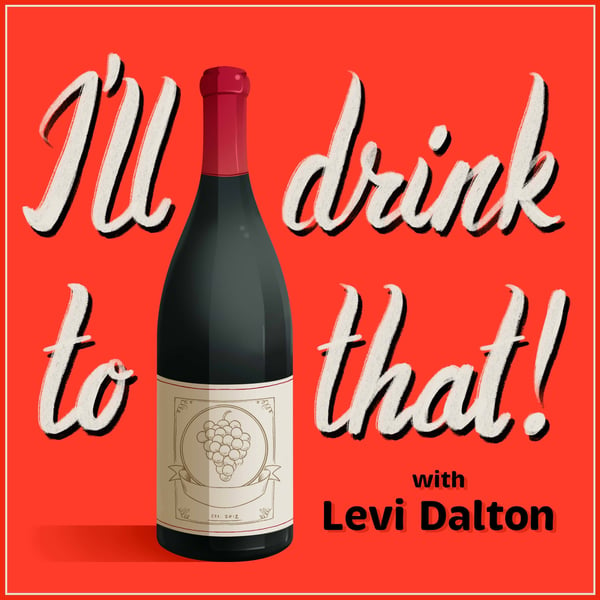483: Listen to Françoise Vannier and Never Look At Burgundy the Same Way Again
I'll Drink to That! Wine Talk
Levi Dalton
4.8 • 1K Ratings
🗓️ 12 March 2021
⏱️ 102 minutes
🧾️ Download transcript
Summary
Françoise Vannier is a geologist who has studied and mapped the vineyards of Burgundy for multiple decades. She is based in France.
Françoise discusses how she began her study of the vineyards of the Côte d'Or, and the surprising results that emerged from her research. She touches on both broad themes and specific, individual instances in her analysis of the rock types and rock weathering in the Côte. For example, she explains how the Côte de Nuits differs from the Côte de Beaune in broad terms, and then gives examples from specific vineyards and villages that illustrate those divergences. She emphasizes the importance of the both the parallel and vertical faults that exist in the Cote d'Or, and explains how the vertical faults are often where combes have developed, which are breaks in the slope (like valleys). Françoise highlights the importance of these combes to understanding the rock distribution of the Côte d'Or. This then plays into her contention that village names are not as helpful as one might think for understanding the vineyards of the area, as it is the combes that are the actual markers of where the rock distribution changes in the Côte d'Or.
Françoise also emphasizes the difficulty and complexity of the topic of Côte d'Or geology, enunciating a number of nuances to the different rock types, and how they weather. She also points out that multiple rock types may be found within a single vineyard, as faults do not fall only at the borders of vineyards. Furthermore, the rock types do not nicely match up with the hierarchy of perceived quality of the vineyards, as the same type of rock may be found under both a villages vineyard and a Grand Cru. These realizations prompted Françoise to examine the historical, cultural, or climatic reasons why certain vineyards are in more esteem than others today, and she shares in this interview her thoughts on those subjects.
Françoise speaks about numerous areas of the Côte d'Or in some depth, including areas within the boundaries of Marsannay, Gevrey-Chambertin, Morey-Saint-Denis, Chambolle-Musigny, Pommard, and Meursault. She dispels common myths about the topic of Burgundy geology, and she gives examples of specific crus to illustrate many of her points. She also provides an examination of how human activity, in the form of quarries, house building, and clos (walled vineyard) construction has altered the Côte d'Or. Lastly, Françoise describes how the Côte d'Or differs from other areas of France which also feature calcium carbonate deposits, such as Champagne and St. Émilion.
Anyone who wishes to understand Burgundy better will benefit from listening to this episode multiple times.
This episode also features commentary from:
Brenna Quigley, geologist and vineyard consultant
Christophe Roumier, Domaine Georges Roumier
See Privacy Policy at https://art19.com/privacy and California Privacy Notice at https://art19.com/privacy#do-not-sell-my-info.
Transcript
Click on a timestamp to play from that location
| 0:00.0 | I'm Levy Dalton and this is all drink to that where we get behind the scenes of the wine business. Oh, When it comes to Burgundy Cruz, something that you will hear Vigneron's say is that one area of Volne differs from another area of Volne, differs from another area of Volne. |
| 0:36.0 | Or sometimes they say this about Vone, |
| 0:38.5 | or Shamboo, or Morisantane. |
| 0:40.8 | It is said about a lot of different particular villages. |
| 0:44.0 | There is the idea that the character of the crews in one part of a particular village |
| 0:49.0 | is different from those found in other parts of that same village. |
| 0:54.0 | This is one reason why you hear Vigneron talking about blending together the wine of several |
| 0:59.0 | different crews situated within a single village to achieve a true sense of |
| 1:04.0 | Valaj character in the wine from that village. |
| 1:08.0 | Benjamin Laroooom mentions doing this for his Valaj wine |
| 1:11.0 | in his interview for instance. But actually when you think about his village, |
| 1:13.0 | but actually, when you think about it, |
| 1:15.0 | it can seem a bit odd that two crews from the same village |
| 1:19.0 | would give a very different character from one another |
| 1:22.0 | and that a third crew in that same village |
| 1:25.2 | might be entirely different from the first two. It can seem odd because the village names are what |
| 1:31.6 | are used to indicate the areas on many burgundy maps and many burgundy labels. |
| 1:37.5 | And we think of Vulnay as a unit containing crews that have a character that is |
| 1:43.0 | volne-like. |
| 1:44.5 | But the question is, should we perceive it that way? |
| 1:47.9 | Should the village names be the distinguishing feature |
| 1:51.1 | in how we understand Burgundy. |
... |
Please login to see the full transcript.
Disclaimer: The podcast and artwork embedded on this page are from Levi Dalton, and are the property of its owner and not affiliated with or endorsed by Tapesearch.
Generated transcripts are the property of Levi Dalton and are distributed freely under the Fair Use doctrine. Transcripts generated by Tapesearch are not guaranteed to be accurate.
Copyright © Tapesearch 2025.

